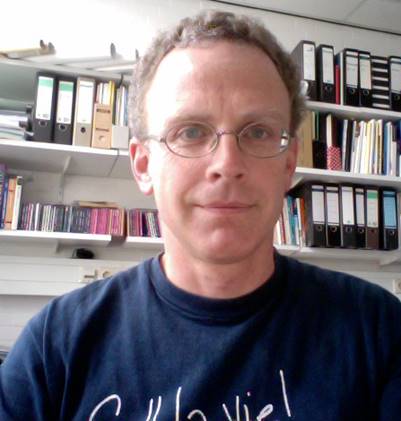
Curriculum vitae
1982-1988
Studied biology at the Technical University and the Ludwig Maximilian University, Munich, Germany
1987-1992
Diploma and doctoral thesis in the group of Dr. Ernst Ungewickell at the Max Planck Institute for Biochemistry, Martinsried, Germany
1992-1997
Post doctoral fellow in the working group of Dr. Emil Unanue at Washington University School of Medicine, St. Louis, MO (USA)
1997-2000
Group leader (C1) at the Institute for Genetics at the University of Bonn
seit 2000
Group leader at the Institute of Cell Biology, merged into the Institute of Neuroanatomy and Cell Biology in 2016
Awards
1982-1987 Scholarship from the Bavarian scholarship for the gifted
1985-1987 Scholarship from the German National Academic Foundation
1992-1994 DFG scholarship abroad
Memberships:
since 1993 American Society for Cell Biology (ASCB)
since 2005 Deutsche Gesellschaft für Zellbiologie (DGZ)
Teaching activity
Course in Human Medicine: Cell Biology and Microscopic Anatomy
Degree in Dentistry: Microscopic Anatomy
Master courses in biomedicine and biochemistry: cell biology and electron microscopy
Bachelor's degree in Biology: Immunology (2000-2011)
PhD program "Molecular Medicine": Cell Biology/Membrane Domains
Further qualifications and activities
2001 Genetic engineering safety course, project manager S1
2009 Training at the electron microscope FEI Tecnai/Eindhoven
2009-2013 Technical manager of the EM central laboratory (with Dr. S. Groos)
2011-2012 University didactics program "Active in teaching"
2012-2015 Deputy lecturer for the module "Cell Biological Basics of Medicine"
seit 2014 Coordination of cell biology modules in the master’s courses in biomedicine and biochemistry
seit 2014 Radiation Protection Officer
seit 2015 Occupational Safety Officer
2020 Expertise Animal experimental methods
Scientific Focus
1. Intracellular transport processes
After entering this field during my doctorate with several studies on the envelope structure proteins of clathrin-covered membrane vesicles, membrane transport processes have become the central theme of my research.
2. Antigen presentation and membrane domains
From the postdoc period in Dr. Emil Unanue's laboratory in St. Louis focused on intracellular loading pathways of MHC II molecules. There I developed a method with which the processing of an antigen and the loading of MHC II molecules with it in cells can be monitored. With this technique, it was possible for the first time to characterize two different loading paths based on their loading products (Lindner and Unanue, 1996). Subsequent work by my own group in Bonn and Hanover dealt with the access of MHC molecules to their loading compartments and provided the basis for the description of a function of membrane domains in the transport of MHC I and MHC II molecules (Knorr et al., 2009) . In addition, the focus was on the pleiotropic cytokine MIF, which induces a confluence of membrane domains from newly synthesized MHC II and those from antigen-binding B cell receptors and thus a joint endocytosis and possibly a "passing on" of processed antigens from B cell receptors to MHC II molecules triggers. (Lindner, 2017).
3. Pathomechanisms of neurodegenerative diseases
After the merger of the Institute of Cell Biology and the Institute of Neuroanatomy, I investigated whether changes in endocytosis occur in spinal muscular atrophy (SMA). SMA is a serious neurodegenerative disease that results in the death of motor neurons and the degeneration of the muscles they innervate. We have identified a novel macropinocytic pathway in motor neurons that is upregulated in SMA. This leads to increased internalization of BMP receptors and their subsequent degradation in lysosomes. Since BMP receptors are very important for the maintenance of neuromuscular synapses and motor neurons, this explains why these structures are primarily damaged in SMA. We were also able to show how the genetic defect that causes SMA leads to upregulation of the new macropinocytosis pathway (see figure). Exactly how this internalization pathway works, whether other receptors are affected and whether this mechanism is also involved in neurodevelopmental disorders in the SMA will be the subject of future studies.
Key references
Lindner, R. and Unanue, E.R. (1996). Distinct antigen-MHC class II-complexes generated by separate processing pathways. EMBO J. 15, 6910-6920.
Knorr, R., Karacsonyi, C. and Lindner, R. (2009) Endocytosis of MHC molecules by distinct membrane rafts. J. Cell Sci. 122, 1584-1594.
Lindner, R. (2017). Invariant chain complexes and clusters as platforms for MIF signaling. Cells 6, 6; doi:10.3390/cells6010006.
Online Profile:
ORCID: 0000-0002-6421-5778